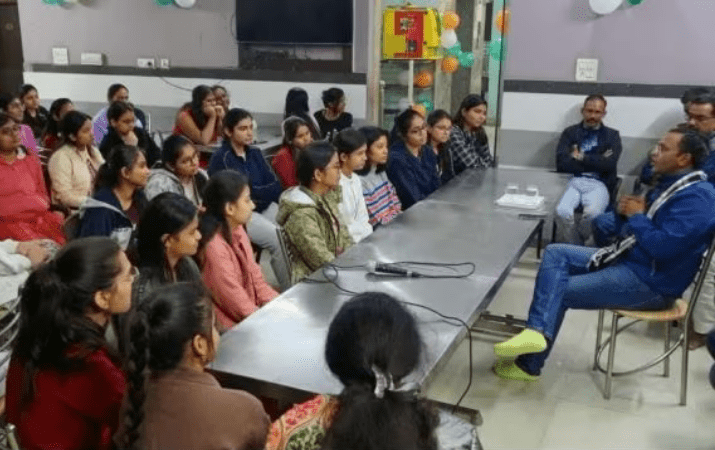The higher education landscape in India has undergone a transformative shift post-COVID-19. The pandemic accelerated the adoption of technology, opened up new educational pathways, and spurred institutional reforms that are redefining how knowledge is imparted and acquired. As we progress through 2023, India’s higher education system continues to adapt, driven by advancements in technology, policy reforms, and a renewed focus on inclusivity and skill development. This blog post explores these advancements, their impact on students and educators, and the challenges that still lie ahead.
The Impact of COVID-19 on Indian Higher Education
The COVID-19 pandemic disrupted traditional learning models, leading institutions to embrace remote and online learning. This shift highlighted the need for an adaptable education system and fostered the rapid adoption of EdTech. Some significant changes included:
- Increased Use of Online Learning Platforms: Universities and colleges began offering lectures, exams, and assessments online. Tools like Google Classroom, Microsoft Teams, and Zoom became staples for virtual education.
- Digital Divide Awareness: The pandemic underscored issues of accessibility as many students, especially from rural or economically disadvantaged backgrounds, struggled with limited access to devices and reliable internet.
- Focus on Student-Centric Learning: Online learning emphasized self-paced education, giving students more flexibility. This approach has led institutions to consider ways to make education more student-centered, both online and offline.
Key Advancements in 2023
As India’s higher education system rebounds post-pandemic, several key advancements are shaping the current scenario:
1. Digital Transformation and Hybrid Learning Models
In 2023, Indian higher education institutions have continued to embrace digital tools, creating hybrid learning models that combine in-person and online classes. Hybrid models offer flexibility and accessibility, allowing students to attend lectures, participate in discussions, and complete assignments from anywhere. This shift not only makes education more accessible but also prepares students for the digital workplace of the future.
2. Rise of EdTech and Personalized Learning
EdTech companies have become key players in the Indian education system, offering platforms that cater to a variety of needs:
- Adaptive Learning Platforms: Companies like BYJU’S, Unacademy, and Coursera are using artificial intelligence to provide personalized learning experiences. Adaptive platforms can assess a student’s strengths and weaknesses, customizing content to match individual learning needs.
- Virtual Labs and Simulation: In STEM fields, virtual labs allow students to perform experiments online, providing hands-on experience even in remote settings. Simulation tools in fields like medicine and engineering are helping students develop practical skills in a controlled, virtual environment.
3. NEP 2020 Implementation
The National Education Policy (NEP) 2020 laid out a framework for a more flexible, inclusive, and skill-oriented higher education system. Key NEP initiatives in 2023 include:
- Multidisciplinary Education: Institutions are adopting multidisciplinary curricula, allowing students to pursue combinations of arts, sciences, and professional courses. This approach prepares graduates for a diverse and evolving job market.
- Credit-Based System and Academic Bank of Credits (ABC): The ABC initiative enables students to earn credits from different institutions and combine them toward a degree. This approach gives students the flexibility to pursue courses across institutions, increasing academic mobility.
- Vocational Training Integration: The NEP’s emphasis on skill-based education has led to greater integration of vocational training, internships, and apprenticeships within higher education programs, preparing students for real-world challenges.
4. Focus on Research and Innovation
Research is gaining momentum in Indian universities, with a strong focus on solving real-world issues. Universities are establishing partnerships with industries and research organizations, offering students opportunities to engage in innovation and entrepreneurship. Additionally, initiatives like the National Research Foundation (NRF) are funding research projects across diverse fields, encouraging a culture of discovery.
5. International Collaborations and Globalization of Education
With the NEP’s support, Indian institutions are establishing collaborations with global universities. Exchange programs, joint degrees, and dual credit courses are providing students with global exposure. Universities are also increasingly allowing foreign faculty and inviting experts to participate in lectures and discussions, helping students gain a more international perspective on their fields.
The Benefits of These Advancements
The advancements in Indian higher education post-COVID-19 are leading to numerous benefits:
- Increased Accessibility: Digital and hybrid models make education accessible to a wider audience, including those in remote or underserved areas.
- Enhanced Employability: Skill-based education and vocational training make graduates more job-ready, addressing the skill gaps highlighted by industry leaders.
- Research and Innovation Boost: A focus on research and industry collaboration nurtures critical thinking, problem-solving, and innovation among students.
- Personalized Learning: Adaptive learning platforms cater to individual strengths and weaknesses, enhancing the learning experience and improving outcomes.
By embracing these changes, India’s higher education system is evolving into a forward-thinking, student-centric ecosystem that can contribute to the nation’s economic growth and development. The focus on accessibility, adaptability, and employability reflects a future-oriented approach that prepares students to thrive in a rapidly changing world.
Challenges to Address
Despite the positive changes, some challenges remain:
- Digital Divide: Although online education has made learning accessible, the digital divide still affects students in rural areas who lack internet access and digital devices.
- Teacher Training: Many faculty members are still adapting to digital tools and need training to use technology effectively in hybrid and online classrooms.
- Quality Assurance: With increased flexibility and online offerings, maintaining high academic standards across institutions is a challenge, as is ensuring students achieve the necessary competencies.
- Affordability: Rising fees, especially in private institutions, make higher education less affordable for many. Although the government has introduced initiatives to support disadvantaged students, more efforts are needed.
The Road Ahead
Looking ahead, Indian higher education stands at a promising juncture. The government, educators, and industry stakeholders are collaborating to make the system more inclusive, flexible, and research-oriented. As advancements in digital technology, NEP reforms, and EdTech continue to take shape, Indian students are gaining the tools and opportunities to succeed in a globally competitive environment.








